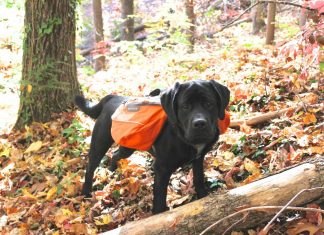SUP Y’all
In case you don’t know, SUP stands for Stand Up Paddleboarding, which is a cross between surfing (it uses a surfboard-like board) and canoeing (it uses a long paddle). While similar to the surfboard, the paddleboard is longer, thicker and wider to allow for greater stability. When paddleboarding, the rider stands upright and paddles instead of sitting, as in a canoe.
The popularity of this sport has been growing in leaps and bounds in the last 5 years and as paddleboarders with pooches began to experiment with taking along their canine companion others began to “get on board” with this also.
How to Get Started
Some dogs can be frightened being on a surface, such as a paddleboard, for the first time that feels unstable. Jumping in with both feet for the first time can set you up for failure before you really get started. Take time to acclimate your dog to the board on dry land before you even get on the water at all.
Introduce your dog to the board in your yard or on the sand at the beach. Let him get a feel for it without any rolling from the water to complicate things yet. Make sure your dog will follow basic voice commands to sit and stay to keep him from possibly jumping overboard. Do not worry that your dog will never get the hang of it even if he is a slow starter. Time and patience will usually overcome any reluctance. Use of clicker training or reward training can help if your dog is especially nervous or resistant.
Sometimes it helps to have the board in the house where your dog can get used seeing it and be able to explore it on his own without you watching. It provides, not a bond, per se, but a feeling of possession with your dog – he thinks it’s his and he is letting you use it to chauffer him around the lake.
Once your dog has become accustomed to being on the board on land it’s time to move onto some quiet water for his first mini-voyage. Take your dog and your board to a lake or other relatively calm body of water. You can go to the beach as well if you can find a mostly wave free zone. Continue short trips, gradually increasing the time and distance as your dog becomes more comfortable. If SUPing at the beach, gradually practice longer trips on the waves as your dog becomes adjusted to the movement beneath his paws.
Water Safety for All
Safety is always a high priority when on the water for both humans and their canines. Not all dogs can swim. Adventure can quickly turn into tragedy if safety is ignored or the importance downplayed. It is advisable to outfit yourself and your dog with a life vest, even if you both can swim. For your dog, a life vest with a handle functions on several levels. It will keep your dog afloat if he jumps or falls off the board. Even dogs that can swim may become tired and need help staying afloat. It is possible, also, for a dog to bump his head when falling off the board and may struggle to stay afloat without help. It helps you to see your dog better if he is off the board, as well as being more visible to others on the water in boats, on jet skis or on a paddleboard. Life jackets for dogs also have a handle allowing you to more easily lift the dog back onto the board.
With a little planning and training you and your dog can enjoy this great sport and the great outdoors safely together. Happy SUPing!









